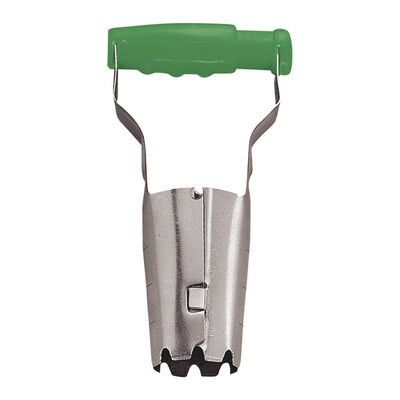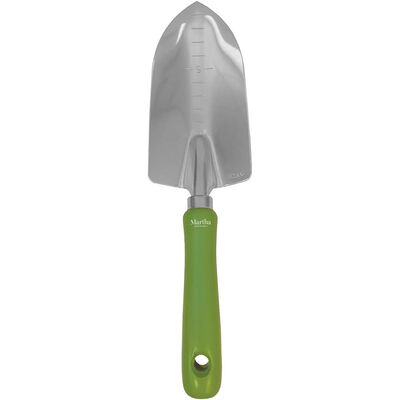
Your Guide To: Perennials
Everything you need to know to bring endless blooms to your garden.
When you’re trying to bring more plants into your outdoor oasis, perennial plants can be a great place to start. They update your garden with vibrant flowers and greenery for many years to come, growing bigger and more beautiful with each passing year. With a wide variety of options, perennial plants also tend to be forgiving, making them a great choice for beginner growers.
How to Keep Perennials Happy
Ensure your perennials are growing their best by keeping their growing space clear of invasive weeds. Once your perennials are planted, prevent weeds from growing by coating the soil surrounding your plant in a 2’’ to 3’’ layer of mulch to block weeds' access to sunlight while keeping soil moist.
How & When to Plant Perennials
In terms of when to plant perennial flowers and plants, the timing can definitely vary. Some grow best when planted in late summer or before the first frost in the fall, whereas others prefer being planted following the final frost in spring.
When it comes to perennial planting, whether you’re planting in a pot or directly in the ground, you want to make sure that location has good drainage. If you plant in a place that retains too much water and often remains wet and soggy, this could lead to the roots rotting and deteriorating.

How Much Light Do Perennials Need?
Just as there are many different types of perennial plants, there are a variety of different sunlight requirements. Sun-loving perennials, like ‘Mountain Frost Ruby Snow’ Dianthus, prefer full sun and drink up as much light as they can get. ‘June’ Hostas, on the other hand, enjoy the complete opposite, flourishing in more shaded areas where they receive much less sunlight. Take note of your specific plant type’s lighting preferences when selecting the perfect spot for them to live.
Reference your Greendigs perennial plant’s product page on www.shopgreendigs.com for more information on their preferred lighting.

How Do I Know When to Water My Perennials?
Similar to light, the watering schedules for perennials can vary based on the specific plant. Ranging from drought-tolerant beauties, like ‘Mountain Frost Ruby Glitter’ Dianthus, to plants that require more regular drinks, you can find plants that work best with the time you can devote to them. See what your plant prefers, and try not to overwater. Too much water can lead to soggy, rotted out roots, halting all potential for growing. Keep an eye out for yellowing, wilting leaves. This can indicate that plants are receiving too much water, or that water isn’t draining properly.
Check out your Greendigs perennial plant’s product page on www.shopgreendigs.com to learn more about their specific watering needs.
How Do I Use Plant Food for My Perennials?
Once your perennials have matured a bit, it’s time to think about their feeding schedule, as it can be helpful to give plants extra nourishment to encourage growth. However, a perennial’s need for plant food can sometimes vary between plant types, so you’ll want to see what works best for your plant.

What Is a Perennial’s Ideal Environment?
The perfect place for your plant to grow can often depend on the type of perennial you’re dealing with. Some prefer cooler, moist climates, whereas others are more tolerant of the heat and humidity common in warmer areas. See what plant types work best for the climate where you live by following plant hardiness zones. To learn more about finding your area’s zone, check out our full guide to plant hardiness zones.
How Do I Prune and Maintain My Perennials?
For some perennials, you’ll want to pluck or trim back dead or faded blooms in order to encourage new blooms to take place. This often helps your perennial grow beautifully all season long. But be sure to do a little research and see what your perennial prefers before you give them a trim. Learn more about the art of deadheading in our full guide on deadheading.
For most perennials, you’ll also want to cut all growth back down to the base once it has stopped growing in the fall so they can prepare to buckle down underground for the winter. Non-hardy perennials will not be able to endure the freezing temperatures that come with winter in your zone, and will need to be dug up, replanted in a pot, and kept indoors until after the last spring frost. Check your plant’s care information to see what they need, come cold season.

How to Address Common Perennials Issues
- Yellowing, wilting leaves may mean your plant is being overwatered. (Note: Yellowing leaves can also just signal the natural process of a plant growing dormant outdoors towards the end of the season, so consider timing.)
- Leaves becoming brown and curling up can indicate that you may need to up your plants’ water intake, or that they’re getting too much direct sunlight.
- If not planted in a pot or soil that has good drainage, root rot can occur.
- Plant growth flopping or falling over can be fixed with plant supports or stakes.
- Fewer amounts of flowers can show that it’s time to thin your plants a little in order to cut down on overcrowding and treat them to more space.
- After planting your perennials plants, bulbs, or bare roots, watch out for signs of invasive critters moving in. Holes in the leaves can indicate that snails or slugs have taken up residence at night, but can be deterred using crushed egg shells, a saucer of beer, and a whole host of other things. Yellowing leaves could be due to tiny aphids overtaking your plant. Remove them using insect sprays (homemade or store bought) or knock them off using a strong stream of water from the hose.
- While they are easy to grow, perennials can sometimes develop fungal problems. Try using different garden fungicides to eliminate the issue. If a plant seems too far gone and highly diseased, it’s best to remove them from your garden entirely and remove the opportunity for any spreading to occur. Fungal issues can also be deterred by giving plants plenty of space to grow with ample air flow.
- If you’re growing your perennials in a pot, you’ll want to watch for signs that they need a potential repotting. For a full rundown on the repotting process check out our article all about plants moving on up.
What to Do If You Still Have Questions?
If you still have questions about your perennials, we’re here to help. Chat live with a Greendigs team member on our website or shoot us an email at [email protected].


